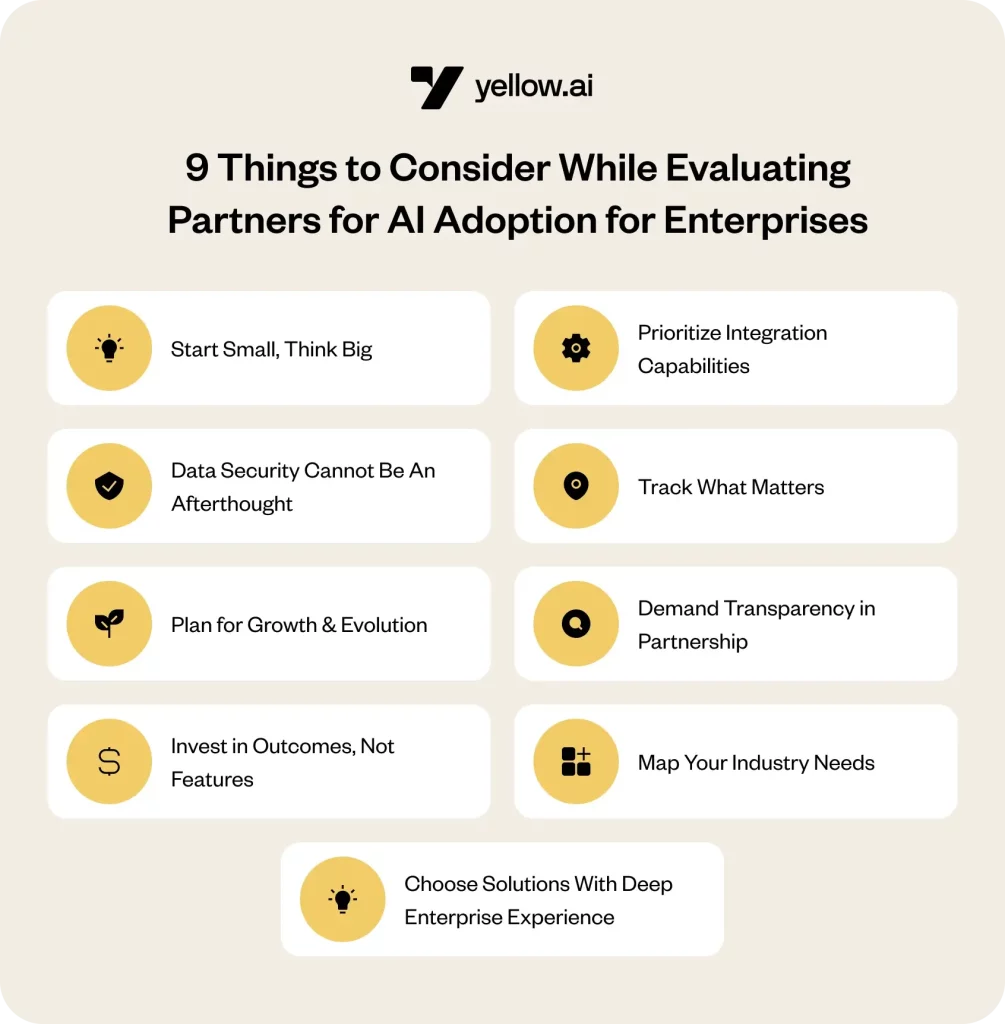“My team is bombarded with pitches about AI solutions every week. At this point, I just want to know – what’s working and what isn’t?”
I hear this almost every day now. There’s an AI fatigue setting in, across enterprise boardrooms. CEOs are tired of the endless pitch decks about transformative AI; CIOs have had enough of inflated promises; CX leaders are overwhelmed by vendors claiming to revolutionize everything.
What’s emerging from all this noise are remarkably grounded questions. Not about the sophistication of the algorithms, the novelty of the models, or distant visions of a transformed future, but about real-world challenges of implementing now:
- How do we actually implement this without disrupting our current operations?
- What are the genuine risks to our customer experience, and what should we prepare for?
- Where have others stumbled, and what can we learn from them?
Three Key Patterns
As someone who spends their days in these conversations, I’ve noticed a few patterns emerging. Here’s what enterprise leaders are really thinking about going AI-first. It’s not just about cost-cutting anymore (though that’s certainly part of the equation). What keeps these leaders up at night is far more nuanced.
- Speed to Impact is Everything
“How quickly can we see results?” This is often the first question I get, and it’s a fair one. One CTO recently told me, “We don’t have 6-12 months to experiment. We need solutions that can start handling basic inquiries within weeks.” They’re right.
The days of lengthy AI implementations are behind us. The market demands quick wins, and I’m seeing the most successful deployments happening within 8-12 weeks, starting with easing the load of those high-volume “lookup” queries that flood support teams, but require zero problem-solving skills from them.
- The Omnichannel Reality Check
The most revealing conversations happen when we discuss channels. As one leader put it, at a recent retail event, “We’ve spent years building out our support ecosystem – web, mobile, SMS, voice, email social, but unfortunately, with each new channel, we added another silo to manage.”
The real need of the hour is not being able to add another channel, but seamlessly unifying all of these channels to form a truly seamless omnichannel experience for the customers. The successful implementations must follow a simple principle: build once, deploy anywhere. Support flows get designed once and work seamlessly whether a customer sends an email, opens the mobile app, or starts a chat; without needing to rebuild processes or retrain AI for each new channel.
- Looking at ROI Differently
Perhaps the most interesting shift I’m seeing is in how leaders are thinking about measuring success. Sure conversations start with traditional metrics – volumes, costs, resolution times – but quickly evolve into deeper questions about customer value – immediate, layered, and long term. Many are realizing that the true measure isn’t just how many queries AI can handle, but whether it’s genuinely improving the support experience.
All successful deployments I’m seeing have one thing in common – they are showing impact across both dimensions – faster resolutions that actually make customers happier while reducing costs, not just make support operations cheaper.
My Playbook: Evaluating Partners for AI Adoption for Enterprise Customer Service
Based on these conversations and real implementation successes, here’s what I recommend to enterprises considering AI agents for customer service:
- Start Small, Think Big – It’s ok to begin with those high-impact, straightforward automations – but choose a solution that can both deliver on your current strategy and scale with your future ambitions. Your initial wins in simple query automation should be stepping stones to handling complex, contextual support scenarios. Our most successful clients started with automating 43% of routine queries in 8 weeks, then scaled to handling complex, multi-turn conversations across channels the next couple of months.
- Prioritize Integration Capabilities – Your customers deserve a consistent experience, no matter how they reach out. Choose partners who can deploy seamlessly across all your channels without requiring multiple implementations. At a minimum, your AI agents should operate wherever your human agents are, ensuring customers receive exceptional support and consistent experiences.
Extra credit: Voice AI agents are extremely challenging to optimize. Make sure your partner can address latency, naturalness, and accuracy to deliver a truly human-like conversational experience.
- Data Security Cannot Be An Afterthought – Data protection, security & compliance is foundational. Your AI partner should have enterprise-grade security baked in, with robust encryptions, compliance certifications, and clear governance measures. Don’t wait for scale to prioritize this.
- Track What Matters The best implementations I see have robust analytics – not just resolution rates, but clear visibility into customer satisfaction, common issues, and emerging trends. This data becomes your roadmap for continuous improvement.
- Plan for Evolution AI capabilities change weekly. Choose a partner who consistently innovates and updates their platform and shares a clear technology roadmap. The solutions that worked six months ago might not be competitive today.
- Demand Transparency in Partnership: The best partnerships thrive on clarity. Look for AI providers who are honest about their strengths and limitations. Realistic expectations upfront—about capabilities, timelines, and outcomes—are key to building trust and ensuring long-term success.
- Invest in Outcomes, Not Features: AI support is an investment in transformation, not just a technology purchase. Success with AI support requires investment beyond licenses. Map your full costs – implementation, training, scaling – against clear value milestones and returns at each stage. This clarity drives stronger deployments and faster ROI.
- Map Your Industry Needs Every sector has unique requirements. Financial services need different security protocols than retail. Look for partners with proven success in your specific industry – they’ll understand your challenges without needing a learning curve.
- Choose Solutions With Deep Enterprise Experience: Enterprise expertise matters more than you’d think. While many seemingly cutting-edge solutions might work beautifully for simple use cases, handling complex enterprise scenarios is a different ball game altogether. Partners with a proven track record in large-scale implementations will bring the expertise to meet complex enterprise demands for security, compliance, and scalability – right out of the box.

Moving Forward with Purpose
So to wrap it up, what I’ve learnt from these conversations is that we’re at an inflection point. The enterprises seeing real success aren’t just deploying AI because it’s the cool new tool in the market – they’re reimagining what’s possible. Starting focused but scaling ambitiously, unifying their channels, measuring what matters, not just what’s easy to track.
The technology is ready. The results are proven. The question isn’t whether to implement AI, but how to do it right. Choose partners who’ve solved enterprise-scale challenges. Focus on foundations – security, scalability, proven experience. But most importantly, stay focused on what matters: delivering exceptional customer experiences at scale.
If you’re thinking about AI support or already working through implementation challenges, I’d welcome a conversation. Let’s explore how these insights align with your customer experience goals and unique enterprise requirements.






















